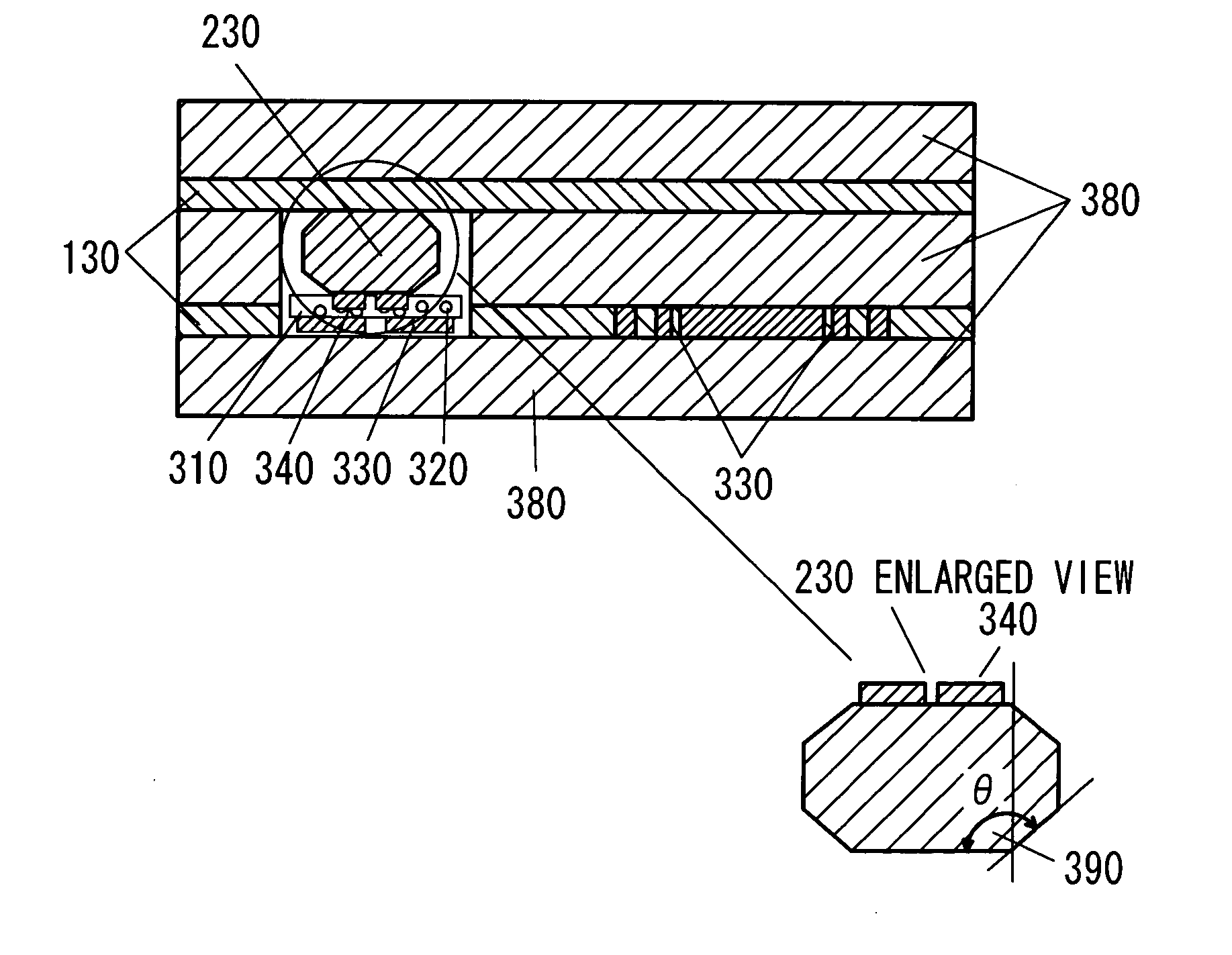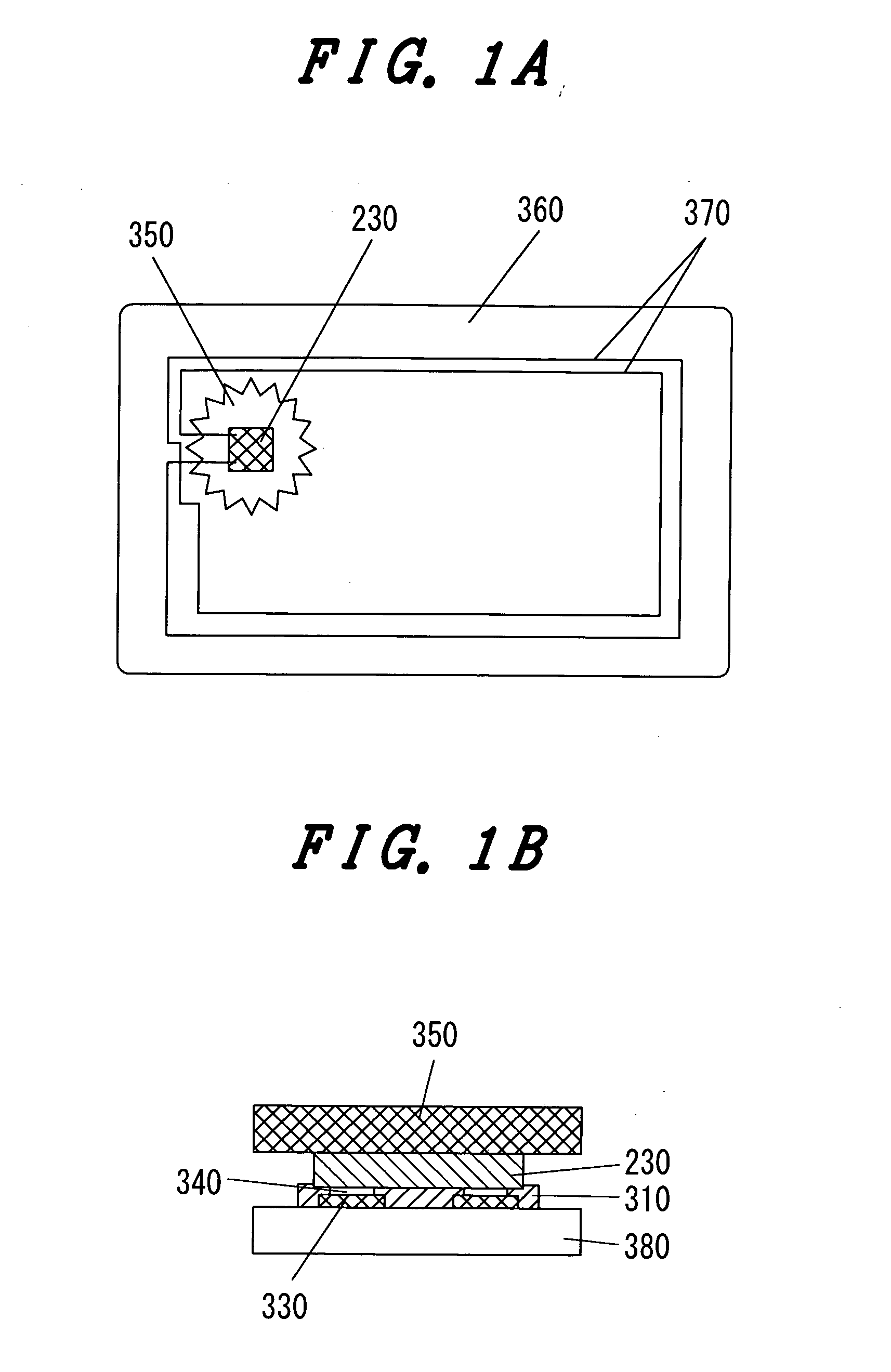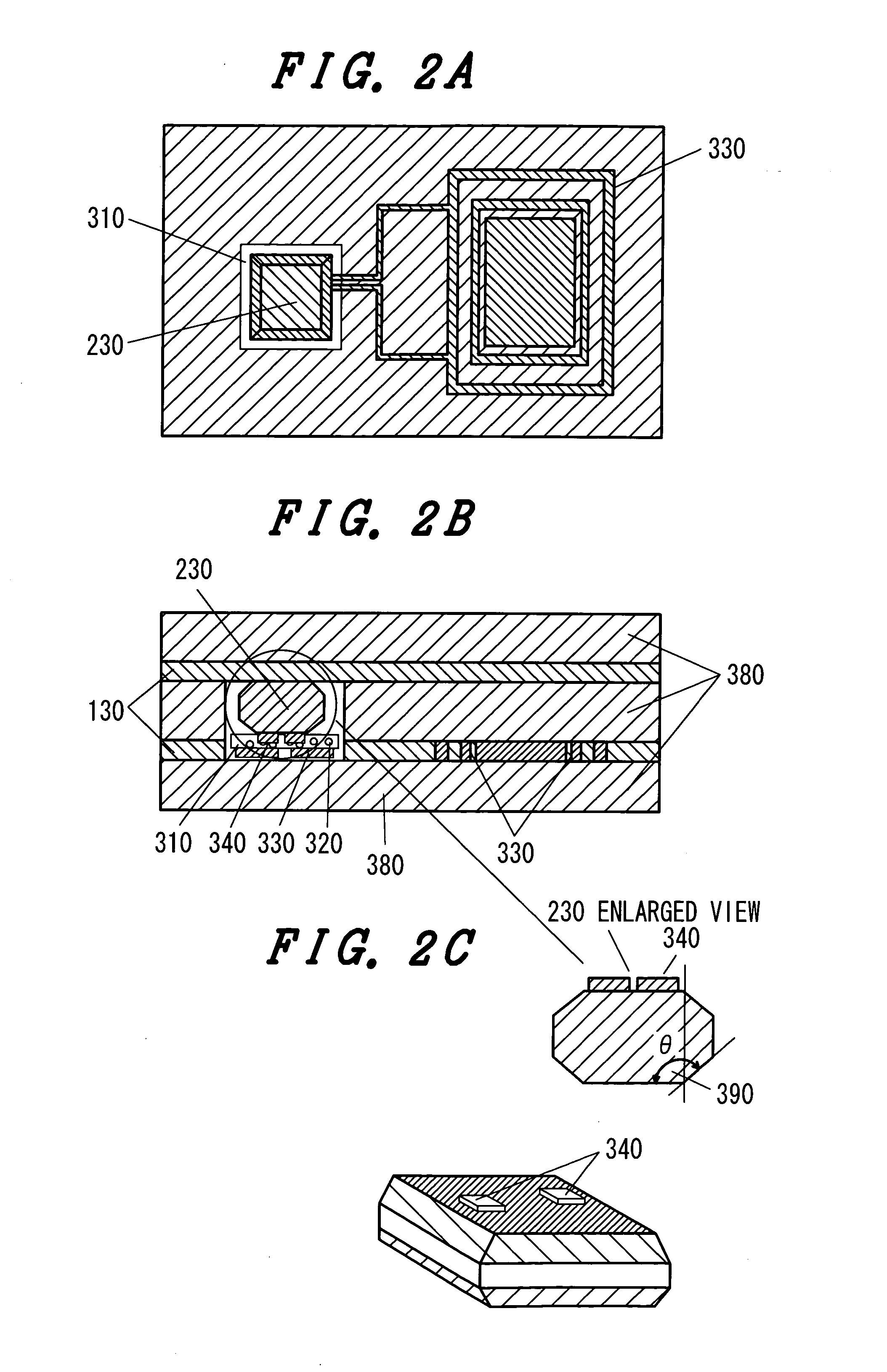Semiconductor device and method for fabricating the same
a semiconductor and device technology, applied in the direction of semiconductor devices, semiconductor/solid-state device details, instruments, etc., can solve the problems of increasing material cost, increasing cost, and increasing process and time required to fabricate the card, so as to achieve excellent mechanical strength, high mounting yield, and high reliability
- Summary
- Abstract
- Description
- Claims
- Application Information
AI Technical Summary
Benefits of technology
Problems solved by technology
Method used
Image
Examples
embodiment 3
[0068] This embodiment is a method for cutting and separating the semiconductor chips 230 from the wafer by omitting the step of forming the third grooves 220 by the third dicing blade 190 in FIG. 5(e) shown in embodiment 3 and by using the step of forming the first grooves 200 by the first dicing blade 190 and the step of forming the second grooves 210 by second dicing blade 190. This embodiment will be described with reference to a fabricating process flow shown in FIG. 6.
[0069] As shown in FIG. 6(a), the back surface side of the semiconductor device laminated on the semiconductor wafer 100 is stuck with the adhesive 130 on the dicing tape 120 mounted on the wafer ring 150. Thereafter, the dicing tape 120 is fixed by vacuum to the vacuum chuck 140 and then the first grooves 200 are formed by the first dicing blade 190 having a sharp tip with the first dicing blade 190 aligned with the scribing line formed in the semiconductor device laminated on the semiconductor wafer 100. Next, ...
embodiment 5
[0084] This embodiment uses the cleavage of a crystal in place of a process for cutting and separating the semiconductor chips by dry etching in the This embodiment will be described with reference to a fabrication process flow shown in FIG. 8.
[0085] First, as shown in FIG. 8(a), the surface of the semiconductor device laminated on the semiconductor wafer 100 is stuck to the adhesive 130 side of the dicing tape 120 mounted on the wafer ring 150. Next, the dicing tape 120 is fixed by vacuum to the vacuum chuck 140 and then the back surface of the wafer is ground by the grinding stone 110.
[0086] Next, as shown in FIG. 8(b), the first grooves 200 are formed by the dicing blade 190 whose top is protruded and curved on the protruding side and is formed in the shape of a polygon (like the process of FIG. 7(b) in embodiment 5). At this time, the end portion of the formed first groove 200 can be formed into a predetermined shape by selecting the top shape of the dicing blade.
[0087] Next,...
PUM
 Login to View More
Login to View More Abstract
Description
Claims
Application Information
 Login to View More
Login to View More - R&D
- Intellectual Property
- Life Sciences
- Materials
- Tech Scout
- Unparalleled Data Quality
- Higher Quality Content
- 60% Fewer Hallucinations
Browse by: Latest US Patents, China's latest patents, Technical Efficacy Thesaurus, Application Domain, Technology Topic, Popular Technical Reports.
© 2025 PatSnap. All rights reserved.Legal|Privacy policy|Modern Slavery Act Transparency Statement|Sitemap|About US| Contact US: help@patsnap.com



